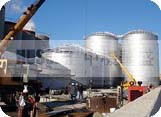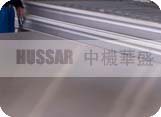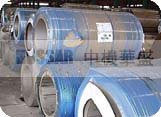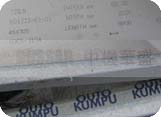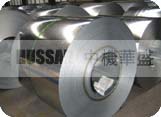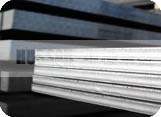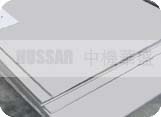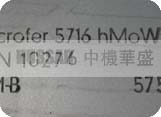| Hussar Machinery Equipment Import & Export Corp. |
|
|
| Home | Brief | Products | Materials UNS | Standard | Order Style | On Stock | Service |
| Monel 400 Alloy (UNS N04400) Alloy 400 (UNS N04400) is a ductile nickel-copper alloy with resistance to a variety of corrosive conditions. The alloy is most frequently specified in environments ranging from mildly oxidizing through neutral and in moderately reducing conditions. An additional application area of the material is in marine environments and other nonoxidizing chloride solutions. ------------------------------------------------------- General
Properties The alloy has a long history of use as a corrosion resistant material, dating back to the early 20th century when it was developed as an attempt to use a high copper content nickel ore. The nickel and copper contents of the ore were in the approximate ratio which is now formally specified for the alloy. As with commercially pure nickel, Alloy 400 is low in strength in the annealed condition. For this reason, a variety of tempers are used which have the effect of increasing the strength level of the material. ------------------------------------------------------- Applications ------------------------------------------------------- Standards ------------------------------------------------------- Corrosion
Resistance In moderately reducing acids, neutral or alkaline solutions, Alloy 400 may be considered for use. The alloy is resistant to most alkalies, salts, organic substances, and atmospheric conditions. Alloy 400 is a consideration for cooler alkaline caustic conditions, although high temperature, high stress, and high concentrations of caustic have produced caustic stress corrosion cracking in the material. The alloy is used in reducing acids like sulfuric and hydrochloric, especially in the absence of aeration and oxidizing species. Alloy 400 is exceptionally resistant to chloride stress corrosion cracking. Application in waters, including sea and brackish water, is a major use of the material. Alloy 400 is attacked in sulfur-bearing gases above approximately 700F (371C), and molten sulfur attacks the alloy at temperatures over approximately 500F (260C). ------------------------------------------------------- Chemical
Analysis C
Mn P S Si Al Ni + Co Cu Fe *By difference - For material furnished to QQ-N-281, lead, tin, and zinc are each typically <0.003. ------------------------------------------------------- Mechanical
Properties Magnetic
Permeability: ------------------------------------------------------- Heat
Treatment Annealing should be done in an atmosphere as free of sulfur compounds as possible since sulfur will embrittle the material in extended exposure time at the anneal temperature range. A low temperature stress relief may be conducted on cold deformed material by heating to approximately 575F (300C) for 1 to 3 hours. A large percentage of Alloy 400 is put into service without final heat treatment. This is done to increase the strength of the material. ------------------------------------------------------- Processing ------------------------------------------------------- Welding Welding procedures for Alloy 400 are similar to those used for austenitic stainless steels. Neither preheating nor post-weld heat treatment are generally required. Joint design is similar to that used for austenitic stainless steels with two exceptions. The first is the need to accommodate the sluggish nature of the molten weld metal, necessitating a joint design sufficiently open to allow full filler wire access to fill the joint. The second is the high thermal conductivity and purity of the material which makes weld penetration lower than in austenitic stainless steels. |
|
Add:E2 Room 2317,Yuan Chen Xin Office Building,No.12 YuMin Road,ChaoYang District,Beijing,China,100029 Copyright 2010JING ICP No.10051934-1

